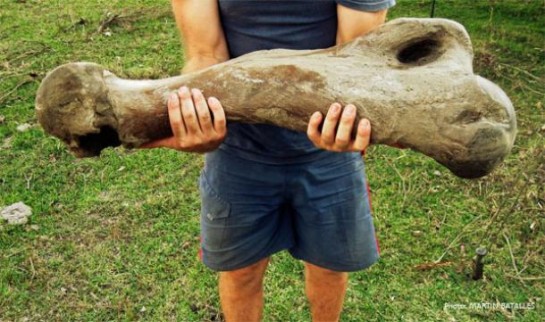
Scientists have made a dramatic discovery in a streambed in southern Uruguay – a set of 30,000-year-old fossilised animals which show distinctive marks left by human tools. The immense significance of the discovery is that mainstream archaeology says that humans began arriving in the Americas between 13,000 and 15,000 years ago, and the Clovis people of North and Central America are generally considered the “first Americans.”
The fossils were first uncovered in 1997 when severe drought led local farmers to drain a lagoon in Arroyo del Vizcaíno, which exposed many fossilised animal remains. But these weren’t just any animals. The bones were gigantic.
It wasn’t until 2011 that a team of palaeontologists managed to break their way through the bureaucratic roadblocks to excavate the site, and over the next two years they unearthed thousands of fossils. It turns out that the bones belong to giant sloths weighing up to 4 tonnes (the size of a small elephant), saber-toothed cats, oversized armadillos, and other mega fauna that roamed the Americas until around 11,000 years ago.
In a recent analysis, just published in the Proceedings of the Royal Society B, it was revealed that the fossils at Arroyo del Vizcaíno have been radiocarbon dated to between 29,000 to 30,000 years old. And, astonishingly, the bones had marks left by human tools. The team also found a potentially human-made scraper that could have been used on dry animal hides, and stone flakes. If this is indeed the case, it means that humans inhabited the Americas at least 15,000 years before previously thought. […]
(via Ancient Origins)

 RSS FEED
RSS FEED FACEBOOK
FACEBOOK TWIITER
TWIITER TUMBLR
TUMBLR